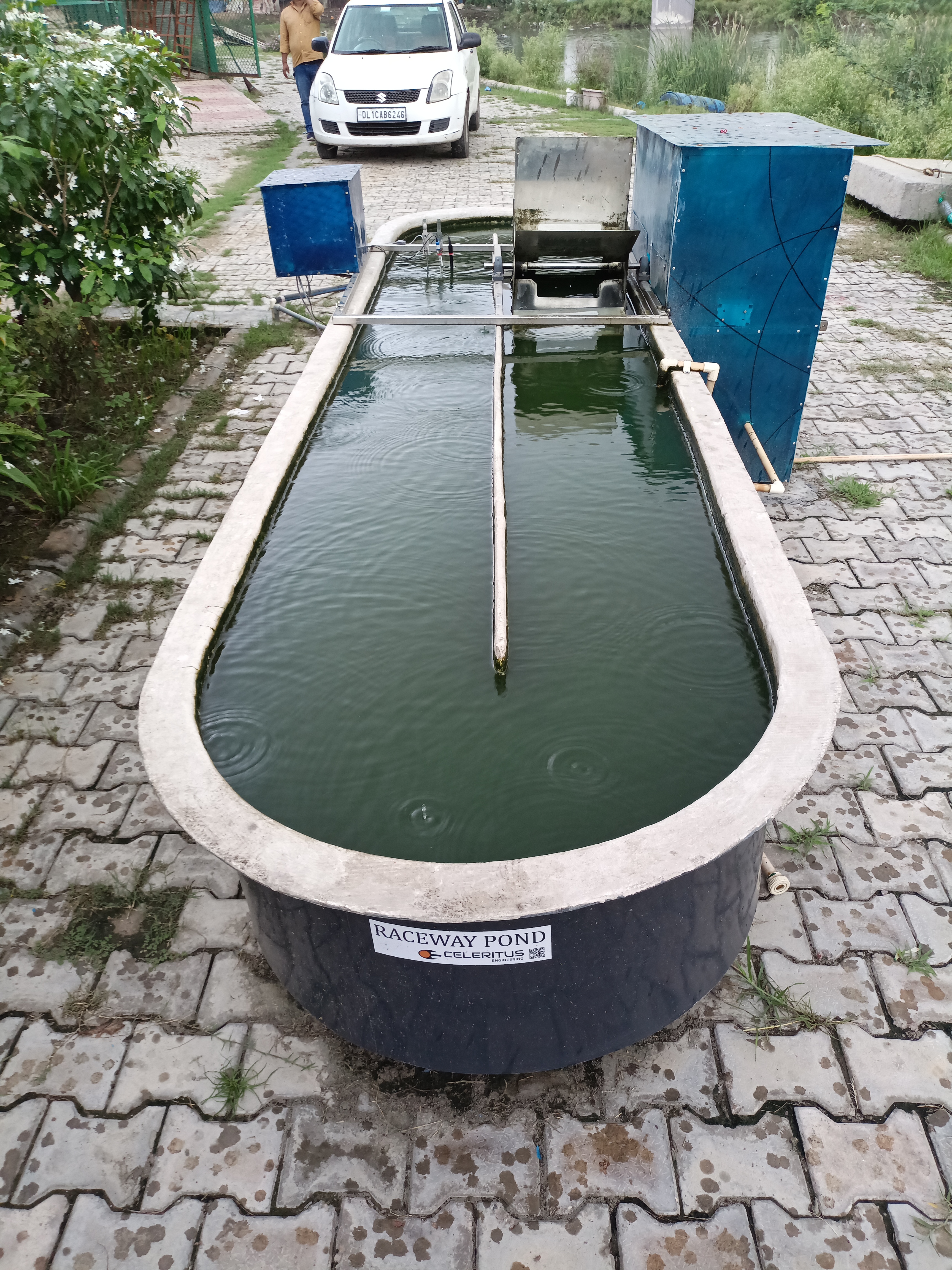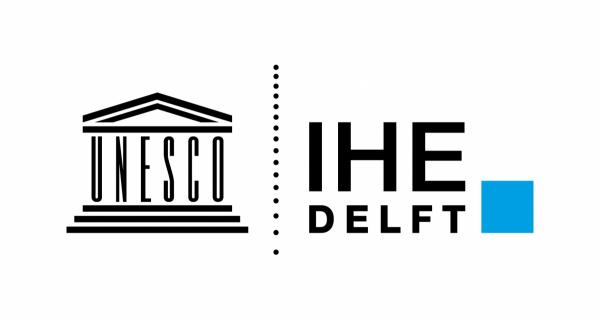Working principles
The fundamental principle governing the operation of the photoactivated sludge (PAS) reactor is to cultivate a mixed consortium of algae and bacteria (e.g. activated sludge/nitrifiers) to removal pollutants of interest from the Barapullah drain. The latter could be heterotrophs, nitrifiers, or, even anammox bacteria.
PAS technology differs from conventional pond systems in that it optimizes the growth of the mixed consortia (i.e. due to the daily light/dark cycles) and the pollutant removal rates are much higher due to higher biomass concentration and the good mixing characteristics achieved in the PAS.
The domestic sewage flowing in the Barapullah drain poses a threat to the environment due to their high pollutant load, which can lead to eutrophication of water bodies and a decline in the ecosystem quality.
It is expected that the ammonium removal rates will be increased by the nitrifying bacteria, which were supplied with oxygen provided by the algae. The addition of bacteria to the microalgal culture increases the biomass retention capacity, allowing the hydraulic retention time (HRT) and solids retention time (SRT) to be decoupled.
One of the other advantages of the PAS is the fact that the microalgal-bacterial system provides the potential for a reduction in HRT, thereby reducing the large area requirements typically demanded by algal systems.
The PAS reactor at our demonstration site is a 1500 L capacity raceway pond. The reactor is first being operated in batch mode to cultivate the microalgae and nitrifiers. After acclimation, i.e. when the reactor reaches steady state, the reactor will be operated in photo-sequencing mode, with 1 or 2 cycles per day, and the following parameters will be monitored weekly: BOD, COD, TOC, TIC, TSS, VSS, PO4-P, NH4-N, TN, NO2-N, NO3-N, DO, CO2, pH, temperature, chlorophyll - a, lipid content, and biomass productivity.

Main research questions
The main research questions of this project can be stated as follows:
- What is the maximum nutrient removal efficiency of the PAS system under the prevailing Indian climatic conditions, in terms of g N removed/m2/day, per sunlight input (gN/mol photons), and the energy consumption (g N/kWh)?
- How do different operational parameters (HRT, pond depth, and biomass concentration) influence the efficiency of nutrient removal and biomass production?
- What are the possible resources that can be recovered from the algal biomass and what are their downstream recovery techniques?
Test results and evaluation
Wastewater treatment and reuse
In the lab-scale bioreactors, the "survival of the fattest" strategy was used to increase lipid productivity by using microalgae-bacteria consortia in photo-sequencing batch reactors (PSBRs) settings.
PSBR 1 was fed with synthetic brewery wastewater during the light period and synthetic liquid digestate during the dark period. PSBR 2 was operated under normal conditions, and it was fed with mixed synthetic brewery wastewater and liquid digestate during the light period.
The PSBR 1 had higher COD, TOC, TIC, NH4+ - N, and TN removal rates of 14.0, 1.0, 1.2, 1.2, and 0.9 mg/L.h, compared to PSBR 2, that had removal rates of 2.0, 0.3, 0.7, 1.0, and 0.5 mg/L.h, respectively.
To enhance the efficiency of the laboratory-scale PAS system in removing nutrients, COD, BOD, additional research should be conducted to determine the impacts of pond depth, light intensity, lipid yield, and other biochemical characteristics of the algal biomass.
For more details, consult the deliverable report*:
Laboratory test reports and fact sheets on water treatment technology and reuse.
* The deliverable report is still under review and has not yet been approved by the European Commission. The final approved version will be uploaded as soon as possible.
Resource Recovery
The primary objective of the study was to enhance lipid productivity using microalgae-bacteria consortia in photo-sequencing batch reactors (PSBRs) with the "survival of the fattest" mechanism. This involved using COD- and TIC-rich brewery wastewater during the light period and ammonium-rich liquid digestate during the dark period.
Lipid content analysis revealed that biomass from PSBR 1 exhibited significantly higher lipid content (54.3%) compared to PSBR 2 (18.6%). Despite the higher biomass productivity in PSBR 2 (19.2 mg-TSS/L.d), the lipid productivity was greater in PSBR 1 (4.1 mg/L.d), suggesting that the presence of light and carbon sources during the light period allowed microalgae in PSBR 1 to produce more lipids, which were partly consumed in the dark period for nitrogen assimilation.
Thus, it is feasible to use the "survival of the fattest" approach for increasing lipid productivity in a lab-scale PAS system, with improved removal rates of various parameters in PSBR 1 compared to PSBR 2, albeit with lower biomass growth and chlorophyll-a concentration in PSBR 1.
To enhance the efficiency of the laboratory-scale PAS system in removing nutrients, COD, BOD, additional research should be conducted to determine the impacts of pond depth, light intensity, lipid yield, and other biochemical characteristics of the algal biomass. It is recommended to integrate the PAS with the Clean Blocks in order to evaluate the overall treatment effectiveness of the hybrid system.
For more details, consult the Deliverable Report*:
* The deliverable report is still under review and has not yet been approved by the European Commission. The final approved version will be uploaded as soon as possible.
More information
For more infomration contact Peter van der Steen, Head of the Water Supply, Sanitation and Environmental Engineering Department, Associate Professor of Environmental Technology, IHE Delft Institute for Water Education, Delft, the Netherlands


